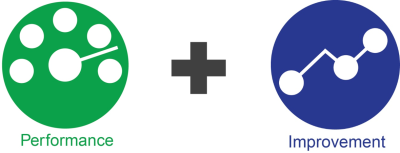Hoax definitions – to trick into believing or accepting as genuine something false and often preposterous. A humorous or malicious deception. Synonyms include deception, fraud, scam.
To move forward, goal clarity is essential. To measure improvement, performance needs a clear definition. Supply chain leaders are competitive. They want to drive supply chain excellence; but today, the definition is not clear. As a result, it is hard to define “best practices” without an agreed standard.
Reflection
I remember sitting in a room and discussing the definition of what is now the Gartner Top 25 methodology eleven years ago. At the time, I was a new analyst at AMR Research and the concept of scoring supply chains was new. The discussion in the conference room was to have a methodology to clearly define supply chain excellence and to use this definition to drive the research at AMR and to help clients. The methodology has changed slightly over the years. It is now owned by Gartner Group and used as a commercial tool to drive client engagements. It has also been co-opted by technology leaders as a moniker, and sometimes a promise, to sell their software.
In the process of building the Gartner Top 25, the companies compete. Corporate communication and supply chain human resource teams at competing companies work hard to win analyst opinion. Over the years, the competition has become more and more intense.
The definition of the methodology and the final results sit behind Gartner’s paywall (Gartner requires that companies pay for research).
Some Background:
The math behind the Gartner Top 25 is quite simple. This year, the methodology was based on five factors:
- Peer rating 25% (Supply chain leaders are asked to rate the companies on the list).
- Analyst rating 25% (Gartner analysts rank the companies on the list).
- A three-year weighted Return on Assets (ROA) number (25%).
- Inventory Turns (15%) based on 2014 results.
- Growth 10% (Year-over-Year comparison of 2013 versus 2014).
Opinion makes up 50% of the rating; and in the ranking system, company comparisons are against each other with little consideration of industry drivers. As a result, when the spreadsheet is sorted, a chemical company is stack ranked against a retail player, and a high-tech company against a food distributor. Make sense? I don’t think so.
Consequently, there is no consideration of relative performance against peer group. There are other limitations as well. The methodology lacks an evaluation of year-over-year improvement. We find that it takes three to five years to see strategies move into action. Another limitation is that it is a focused analysis of large companies. When I read the press releases, I hang my head in embarrassment. I am sorry that I was ever a part of its creation.
The write-up from the Gartner website states, “The Gartner Supply Chain Top 25 is about leadership. Every year we identify the companies that best exemplify the demand-driven ideal for today’s supply chain and document their best practices, which can help all companies move closer to their demand-driven goals.” My Point of View: I think what we have is in essence a beauty contest. At the Gartner conference twitter is full of wonderful pictures of an elegant dinner. Companies celebrate. The tragedy is that there are no valuable insights for the market. Last year I called it MUSH. This year I want to ask readers to not perpetuate a HOAX. I don’t think the Gartner Top 25 is a good and accurate measurement of supply chain excellence. I want to persuade you to consider a different way of looking at leadership which is more factual, and meaningful.
Why Do I Think This?
Supply chain leaders manage a complex system of nonlinear, but very interconnected, metrics. The management of this complex system requires orchestration across functional boundaries to drive business results. Leaders need to balance a portfolio of metrics. Each supply chain has its own potential based on business drivers. High-tech is distinctly different than the retail industry.
At the end of the day, real results define supply chain leadership. It is the year-over-year improvement in balance sheet results and income statement improvements as defined by the operating strategy. Based on the research that we have done at Supply Chain Insights, leaders make these improvements slowly over the course of three to five years. A year-over-year comparison is not sufficient. The foundation to drive meaningful improvement is reliability in driving results at the intersection of cost, inventory, and customer service. (And unfortunately there is no good measure for customer service for the industry to use in a ranking system.)
This definition is quite different than the Gartner Top 25. The Gartner Top 25 does not consider:
- Industry differences
- Improvement in costs
- Year-over-year improvement at the intersections of the metrics
- The need for a balanced portfolio
Why Does It Matter?
We think that supply chain leaders deserve better. It is for this reason we are hard at work on the analysis of the Supply Chain Metrics That Matter series of reports. These reports are a deep analysis of supply chain performance within an industry. Each report takes a month to produce. In these reports, we analyze performance patterns of public companies before the recession, post-recession, and for the past five years. It is a study of patterns at the intersection of the critical metrics that correlate with market capitalization.

This research will culminate into the Supply Chains to Admire results that we will launch at our 2015 Supply Chain Insights Global Summit. The report series analyzes relative performance of companies against a balanced portfolio of growth, operating margin, inventory turns and Return on Invested Capital (ROIC) for three time periods: 2006-2014, 2009-2014, and 2011-2014.
The analysis evaluates relative performance against industry averages and gauges supply chain improvement. We use the methodology to analyze all public companies within an industry, regardless of company size. We share the reports openly, in front of the firewall. We want to help supply chain leaders around the world. We think that we need to have an active debate on supply chain excellence. And after the dust clears, we want all to have a clear direction on how to improve business results, and the role of supply chain leadership.
What have we found? In the pharmaceutical report, we found that Novo Nordisk is driving great improvement, and AstraZeneca is posting the highest level of improvement. In the chemical report, we found that Eastman Chemical has the highest level of performance and Ecolab is posting recent improvement. In the food and beverage report that we posted last week, General Mills is the clear winner in the food group on both performance and improvement, and Anheuser-Busch/Inbev ranks the best in the beverage industry. In the Gartner Top 25, none of these companies make the list. We think that it is important for industry leaders in pharmaceutical, food and beverage, and chemical companies to have a meaningful study to reflect on performance.
We will be completing all of the industries over the summer. Look for the high-tech and electronics and the consumer packaged goods reports in the July newsletter. We will also be interviewing the leaders to understand what they believe drove top performance.
We use performance on the Metrics That Matter metrics portfolio to select speakers for our conference. This year, we have invited three of the leaders—Intel, Seagate, and General Mills—to tell us their stories directly at the Supply Chain Insights Global Summit and these stories will be openly broadcast on ustream feeds. As we do research to understand the business difference, we will share these results openly. It is our intention to openly share all results (in our blogs, podcasts, and videos from our conference.)
That is what we are all about: open and meaningful research for the supply chain leader.
Summary
In short, we know that a beauty pageant is a beauty pageant. When we watch the Miss America Pageant, we know that it is a show of beautiful ladies. The broadcast does not attempt to pretend. It is what it is: a beauty pageant.
We believe that what we have in the Gartner Top 25 is a beauty pageant masquerading as a helpful tool for supply chain leaders. We want readers to beware! We believe that it is a HOAX, and we believe that that hardworking supply chain leaders deserve better!
I look forward to getting your insights, and I would love your feedback on the Metrics That Matter reports and the Supply Chains to Admire Methodology.
Life is busy at Supply Chain Insights. We are working on the completion of our new game—SCI Impact!—for the public training in Philadelphia in August and the content for the Supply Chain Insights
 Global Summit in September. Our goal is to help supply chain visionaries, around the world, break the mold and drive higher levels of financial improvement. The conference will feature case studies on supply chain transformation, digital transformation and insights from supply chain leaders on the Supply Chain to Admire analysis. We find that companies that have reached better alignment with their financial teams have higher levels of financial results.
Global Summit in September. Our goal is to help supply chain visionaries, around the world, break the mold and drive higher levels of financial improvement. The conference will feature case studies on supply chain transformation, digital transformation and insights from supply chain leaders on the Supply Chain to Admire analysis. We find that companies that have reached better alignment with their financial teams have higher levels of financial results.About the Author:
 Lora Cecere is the Founder of Supply Chain Insights. She is trying to redefine the industry analyst model to make it friendlier and more useful for supply chain leaders. Lora has written the books Supply Chain Metrics That Matter and Bricks Matter, and is currently working on her third book, Leadership Matters. She also actively blogs on her Supply Chain Insights website, at the Supply Chain Shaman blog, and for Forbes. When not writing or running her company, Lora is training for a triathlon, taking classes for her DBA degree in research, knitting and quilting for her new granddaughter, and doing tendu (s) and Dégagé (s) to dome her feet for pointe work at the ballet barre. Lora thinks that we are never too old to learn or to push the organization harder to drive excellence.
Lora Cecere is the Founder of Supply Chain Insights. She is trying to redefine the industry analyst model to make it friendlier and more useful for supply chain leaders. Lora has written the books Supply Chain Metrics That Matter and Bricks Matter, and is currently working on her third book, Leadership Matters. She also actively blogs on her Supply Chain Insights website, at the Supply Chain Shaman blog, and for Forbes. When not writing or running her company, Lora is training for a triathlon, taking classes for her DBA degree in research, knitting and quilting for her new granddaughter, and doing tendu (s) and Dégagé (s) to dome her feet for pointe work at the ballet barre. Lora thinks that we are never too old to learn or to push the organization harder to drive excellence.







